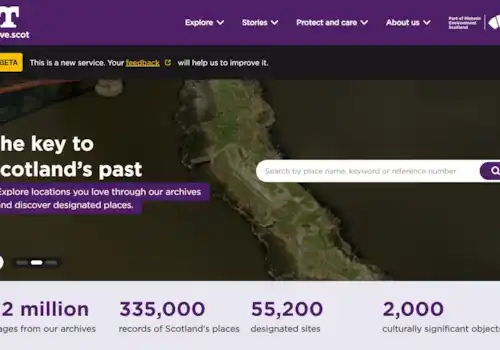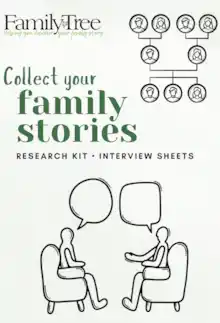29 September 2021
|
To mark the start of Family History Month, Ancestry are sharing their ten top tips for starting your family tree.
Family History Month runs throughout October and here at Family Tree, we'll be sharing lots of free content to help you build your family tree.
Ahead of the launch of Family History Month, Ancestry share their advice on how to build a family tree.
1. Old photos
Kick-off your family history research by looking through old photo albums and scrapbooks, as many contain surprising details about family members that could prove to be the perfect starting point. Additionally, talk to family members who can possibly share nuggets of information. Older generations have stories you may have never heard and often these can be the most insightful.
2. Start a free trial at Ancestry
Sign up to a 14-day free trial at Ancestry and take some time to fully explore the website and familiarise yourself with how it works. This way you can pick up tricks on how to focus on records most relevant to you.
3. Start with what you know
Start building your family tree with the information you have, like names, dates of birth and where they were born. As you build your family tree on Ancestry, you’ll start to receive Ancestry Hints®, notifications of records or other people's family trees that may contain information about people in your tree, to aid your journey.
4. Track your searches
Delve into the records available online, ensuring to keep track of your searches, what you found and any other information you’re looking for. It’s also worth noting down any unsuccessful searches, to prevent repetition.
5. Use the census for family history
Census records are one of the best places to start, as they provide extensive details like names, addresses, occupations, and relatives that can steer your search in the right direction. The 1939 Register is essential as it’s the most recent example of a country-wide record, as the 1931 census was destroyed during WWII, and no census was taken in 1941 due to the ongoing conflict.
6. Parish records
Parish records can help you find key pieces of information about local communities. You’d be amazed at what you might be able to find by diversifying your search and looking at other records – whether that’s birth, marriage, or death certificates, occupation records, trade directories, or schools, directories and church histories.
7. Old photographs
Photographs can also be vital in finding out more about your ancestors. For instance, scruffy overalls, a smart uniform or even a suit could help identify what they did for a living and point you towards the right records. These can also be a great way to find more personal information about your ancestors’ daily lives, and even their personalities.
8. Military history records
If you wish to find out more about your family’s military history, you can check out the military and home front records on Ancestry, including UK, Military Campaign Medal and Award Rolls, 1793-1949 and WWII Civil Defence Gallantry Awards. The UK & Ireland, Nursing Registers, 1898-1968 are also great as it focuses on the nurses who worked during the Second World War or even the Post Office Appointment Books, 1737-1969 as it profiles the women who kept the country’s postal service running during wartime.
9. The genealogy community
Be sure to utilise online family history message boards and communities, as they are a great space to gain useful insights that can help you on your journey, especially if you’re just getting started.
10. Use local archives
Finally, if you’re interested in learning more about your ancestors from a specific region such as Yorkshire, Wales or Scotland , try searching through local archives where you’ll be able to uncover record collections and genealogy resources specific to those areas.








